Desks: Our Favorite Articles
Tim Rousseau, Christian Becksvoort, and others show you how to make varying styles of desks in this roundup of articles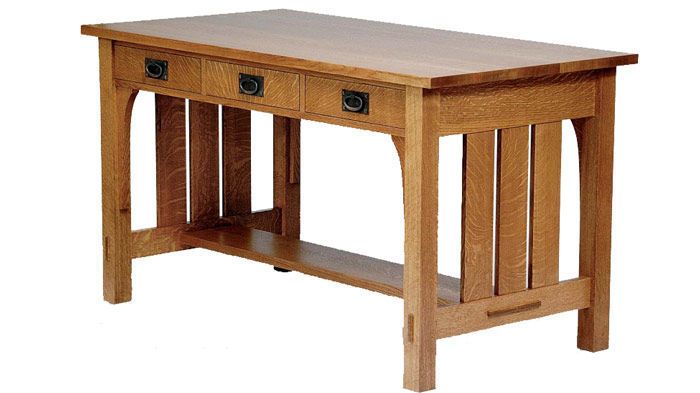
Here are Fine Woodworking’s top desk articles and project plans to fuel your inspiration and show you how to make your next desk with tips for the appropriate desk height, joinery, drawer installation, glue-up, and more. The variety of styles here include Christian Becksvoort’s Shaker-inspired standing desk, Tim Rousseau’s Danish Modern desk, and Eric Keil’s Arts and Crafts Library Table, which is currently the desk of our Editorial Director, Tom McKenna. In this collection, we have also included the bonus project plan of Thomas Jefferson’s Writing Desk by Lon Schleining, which we have on display in the Fine Woodworking conference room.
Stand Up to This Desk
Synopsis: Chris Becksvoort’s not a sit-down type of guy, so it was inevitable he’d design himself a standing desk. This one has a slanted surface for drawing, a flat surface for a laptop, books, coffee mug, and other materials, a foot rail for comfort, and storage inside for office materials. The base is simple mortise-and-tenon construction and the desk box is dovetailed, with an interior gallery and drawer.
by Christian Becksvoort
Arts and Crafts with an English Accent
Synopsis: Styled after a well-known English Arts and Crafts manufacturer’s work, this desk incorporates the signature square, flared feet and curved front aprons of the Harris Lebus firm. The wall-mounted gallery is a perfect complement, incorporating Lebus’s signature crown, with its dramatic bevels and exaggerated overhangs. The curved front apron is created with a mix of hand and power tools; the joinery for the desk includes mortise-and-tenon and dovetails. The wall-hung cabinet construction is basic, with routed through-dovetails at the corners and stopped dadoes housing the vertical dividers. An elegant dragonfly inlay enhances the doors.
by Nancy R. Hiller
Curved Stretcher Adds Grace and Legroom
Synopsis: Furniture maker Mark Edmundson explains how to make a bent-laminated curved stretcher that can lend graceful lines as well as ample legroom to a table or desk. Step-by-step instructions detail laying out the curve, preparing the form, gluing the lamination, selecting the joinery, cutting the splice joints, and finally, gluing the stretcher to the legs.
by Mark Edmundson
An Arts and Crafts Library Table
Synopsis: This author builds tables with drawers faster and stronger by building frames to go over and under the drawers and attaching them to pre-assembled ends. He advises that best boards go on top, and he glues those up first so he knows what he’s working toward. Then he assembles the ends, attaches the frames and shelf and installs drawer glides. The article offers detailed instructions on the table end glue-up, the shelf and drawer assembly, and the installation of drawer blocking and glides.
by Eric Keil
Mining Danish Modern
Synopsis: In this first Designer’s Notebook department, we take a look at the inspiration and design process behind a desk by Timothy Rousseau. The inspiration was Danish Modern, and the end view of the desk was the element that consumed much of the maker’s initial energy. But the process of designing furniture is influenced by lots of different things, and some of them are unintended. In this case, time constraints came into play and helped to simplify and clarify Rousseau’s vision of the desk. The end result? Judge for yourselves.
by Tim Rousseau
Bonus: Thomas Jefferson’s Writing Desk
Synopsis: Lon Schleining tackles a complicated project that reflects Thomas Jefferson’s ingenuity. Schleining built a copy of Jefferson’s writing desk — only 5 lb. — by using drawings and photos of the original on display at the Smithsonian. Several measured drawings are reproduced in the article. He incorporated modern materials, such as plywood-core panels, for stability. Diving into construction, he says the carcase construction is straightforward, but it’s a challenge to build and fit the drawer, and a delicate touch is required to make and install the support stand. Count on using a lot of hardware. Schleining includes information on finish and on edge-banding.
by Lon Schleining

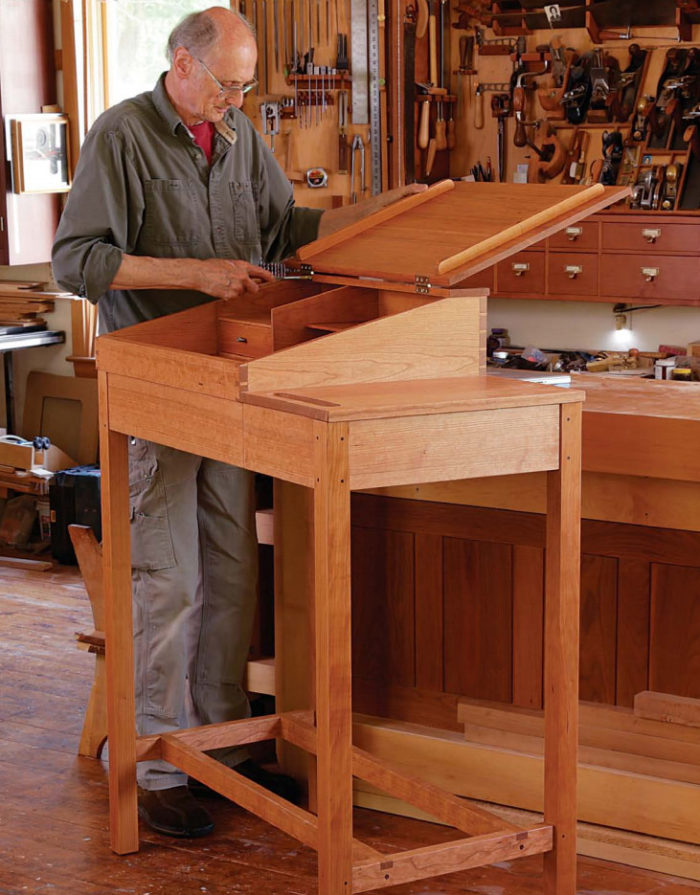
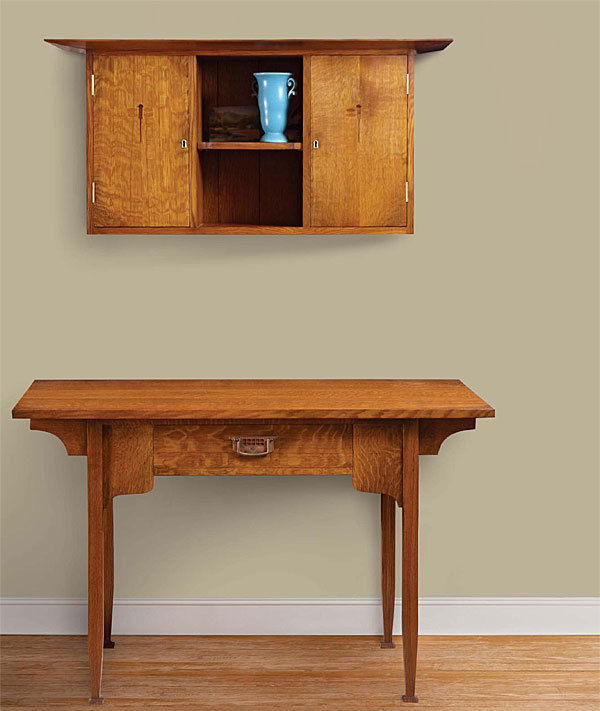

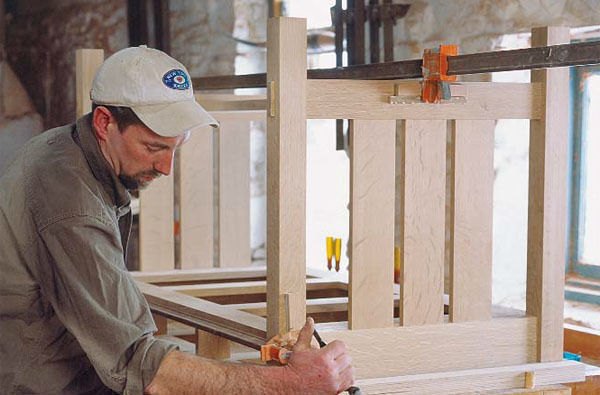
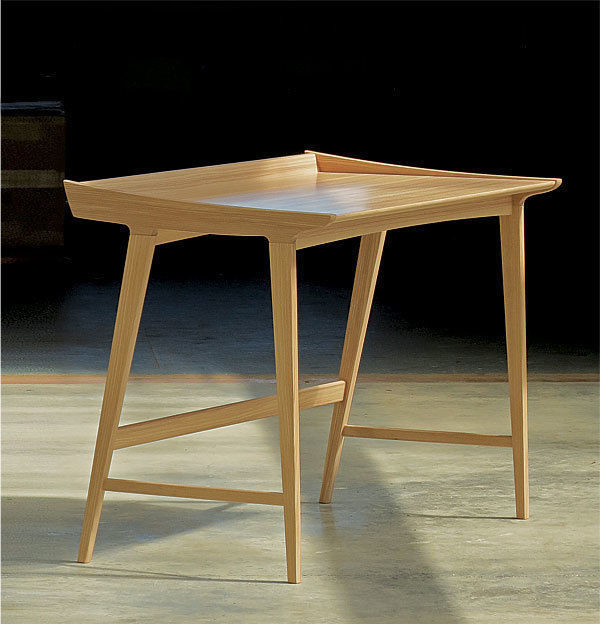
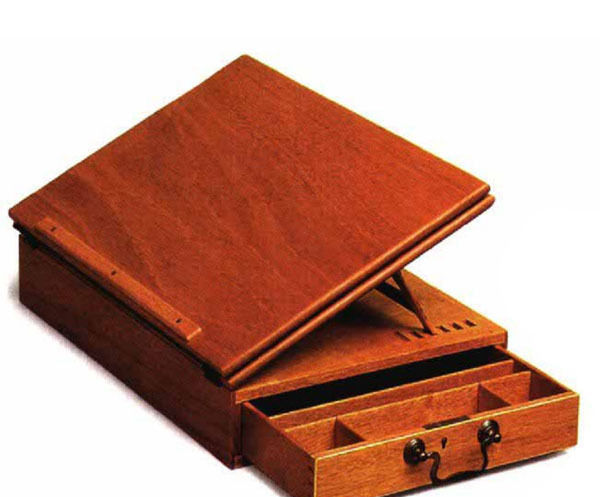
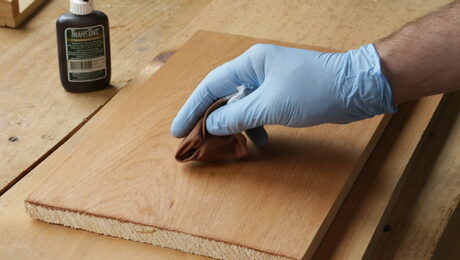
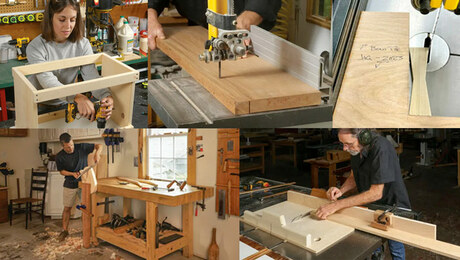
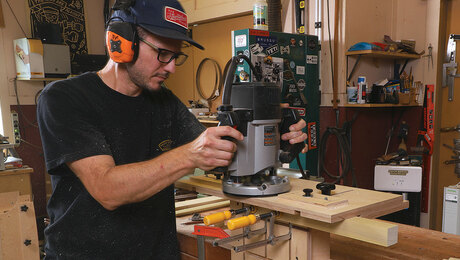






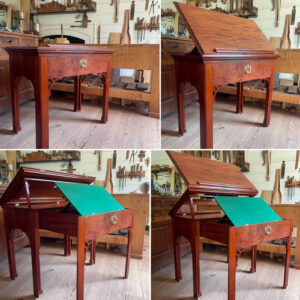





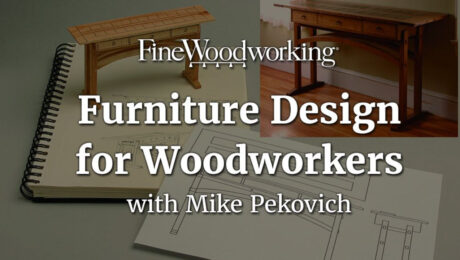
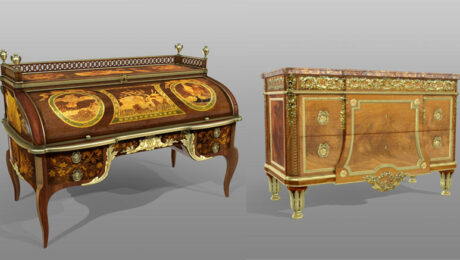








Log in or create an account to post a comment.
Sign up Log in